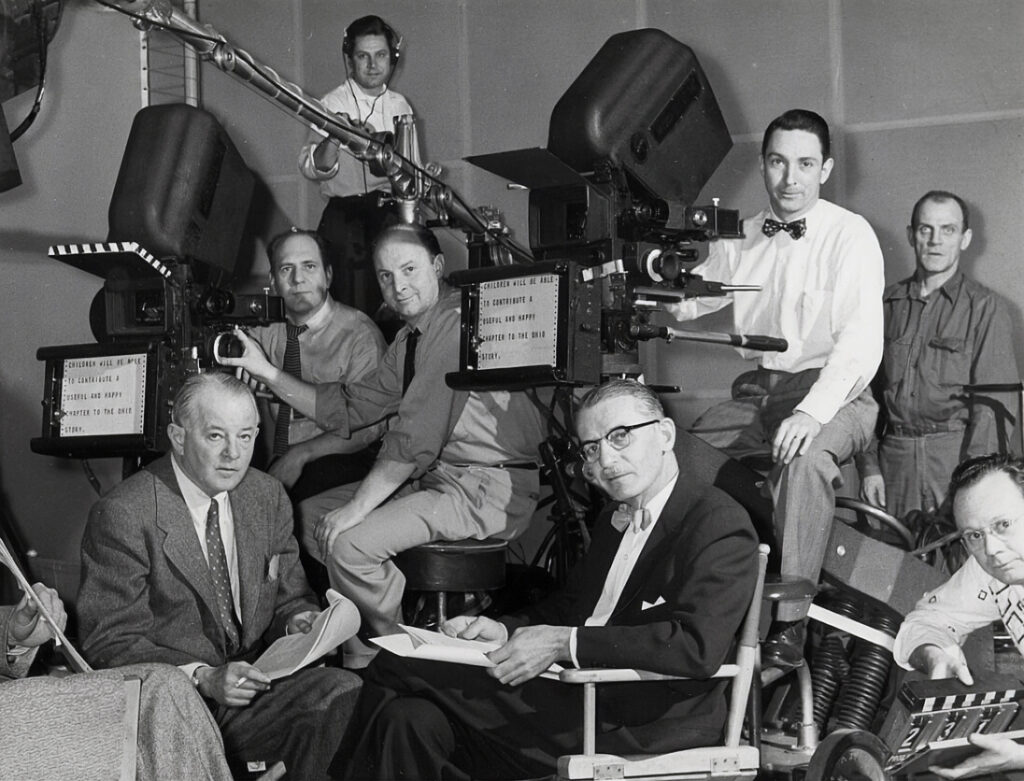The teleprompter, also known as a prompter or Autocue (which is actually a brand name), is an essential tool used in the media industry to aid presenters, speakers, and actors deliver their lines effectively without the need to memorise their scripts. It displays the text of the script on a screen that is situated in front of or close to a camera or lectern, allowing presenters to read the text as it scrolls.
The first prompter, known as the “Cue-Dot” machine, was invented by Hubert Schlafly in 1950. It consisted of a motorized scroll of paper attached to a glass screen that reflected the text. The device was used for the first time in 1952 during the televised speech of Dwight D. Eisenhower’s campaign for the US presidency.

In the early 1960s, an upgraded version of the teleprompter was introduced by Jess Oppenheimer, a TV producer for shows such as “I Love Lucy.” This model used a transparent glass panel, a video monitor, and a camera to display the text. It was then called the “Electro-Scripter,” and it revolutionized the teleprompter industry, making it easier for presenters to deliver their lines with greater accuracy and ease.
Over the years, many more advancements were made, and today there are many different variations available. These computer-based versions facilitate text displayed on high-definition screens, controlled by a skilled operator. This text can be customized to show various sizes, fonts, and colors.
The teleprompter has become an essential tool for the media and events industry, helping news anchors, presenters, and public speakers deliver their speeches confidently and professionally. It has also made it possible for politicians and other public figures to deliver speeches without the need for memorization or paper notes, allowing them to focus on other aspects of their presentation.
The teleprompter has come a long way since its invention in the 1950s. As technology continues to advance, SuzyCue will continue to deliver exceptional service to our clients.